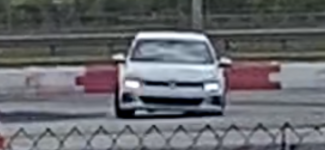It's just my gut feeling after all the STH design and research I've done. I know nobody has done it. I would do it if I were to race in GS.
Also, just because one-front runner in STH didn't use a bigger FSB, does not mean there is only one way. What were his spring rates? It can be done without bars with correspondingly stiffer springs. (Side note. I think the top time in STH may have been influenced by a down cone that was never attributed to any car, but I pointed it out on my run, the winner ran before me

)
The primary reason I hear for getting a rear bar is
1. It's the "first" mod everyone else does
2. It's easy
3. It's cheap
4. I gEt MaD oVeRsTeEr
None of these reasons are good considering the alternatives allowed in SCCA.
I believe the real problem with the GTI is front grip. Not too much rear grip.
So, we need to reduce the amount of front body roll since the OEM front roll couple is heavily front biased, as in most of the body roll comes from the front suspension. and 60% of the car's weight is over the front axle, aka 1000 lbs per corner static.
Also, if anyone watches a stock GTI with good tires drive a sweeper or a quick transistion, you may notice the rear tire picking up off the ground. Three wheeling.
What a siffer rear bar does, is allow the rear inside tire to lift higher. The issue is, if the tire is already off the ground, going higher is not helping. But what changes is how soon the tire lifts, not if it lifts.
This sooner lift can cause unpredictable and abrupt changes in rear grip and handling.
So I believe the best choice is to try and limit front camber loss with the front bar, use rear toe out to get the rear tires to follow the front tires using a larger scrub radious and enjoy drama free grip filled corners.
I think drivers are overly scared of rear toe changes and tire wear. Which I find ironic when a set of tires will last maybe a season depending on the # of events and how much wear the front tires get due to lack of camber and driver induced, and OEM alignments.
Other benefits of the FSB:
1. Better turn in
2. Better slolom response
3. Reduced rear tire pressure, possibly better tire wear, may need to reduce rear camber
Possible negative side-effects
1. Too much front bar does lift the front inside tire on track out and limits power down without a differential. With the VAQ it heats the inside brakes a lot.
2. The correct alignment reqiures some testing
I would love to co-drive a few events with a local GS GTI to prove my theory correct.
